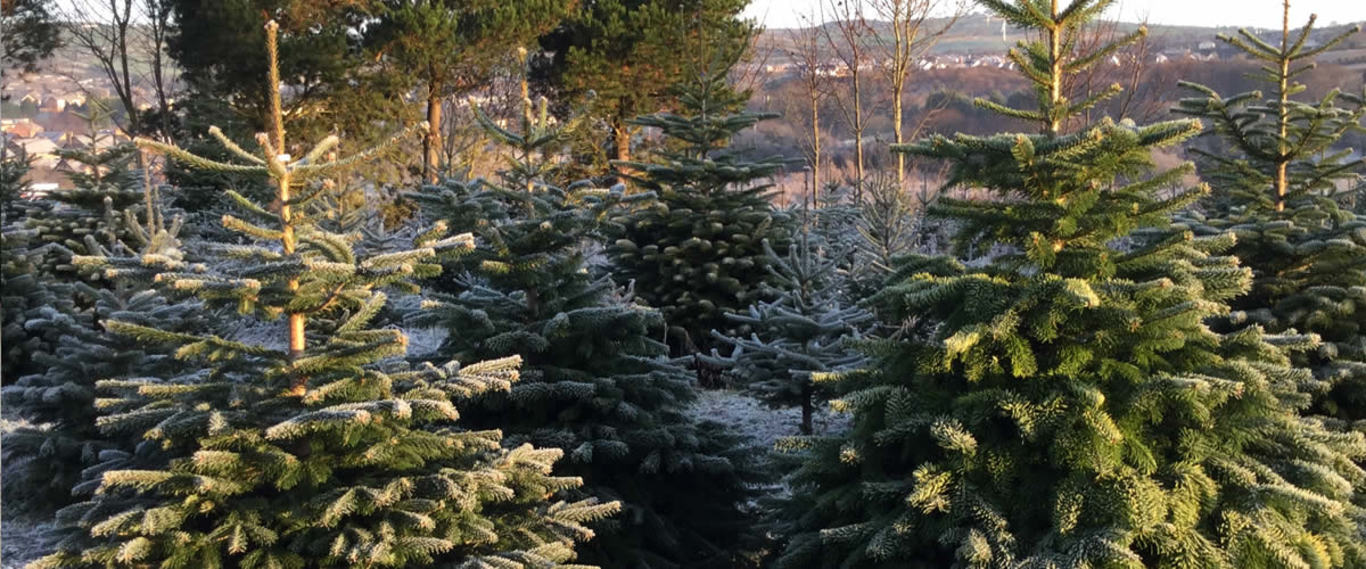How conflict in Ukraine and frost in Germany affect Irish Christmas tree growers
The last few weeks in November are peak season for growers as their annual harvest begins.
‘TIS THE SEASON to be busy if you’re in the business of Christmas trees.
The last few weeks in November always mark the start of peak season for the nation’s growers, whose harvests begin at this time of year.
But, in reality, a Christmas tree grower’s work begins in January – and there are a huge number of factors that go into determining whether or not the following November will have a good harvest.
In total, about 600,000 Christmas trees will be felled this year and sent onto the different selling points at home and abroad.
“It’s a frantic period for all the growers,” said Tony Johnston, chair of Irish Christmas Tree Growers.
“It’s such a short window to try to shift 600,000 trees. So it’s all hands to the pump and it just doesn’t stop.”
It can take up to 10 years for a Christmas tree to become fully grown and ready for harvest as part of what is a year-round job of tending the crop and ensuring nothing goes wrong.
Around 80 growers across the island of Ireland are part of the ICTG, and it’s estimated that the industry is worth over €20 million each year to the Irish economy in trees sold and the labour involved.
Issues
Theft, bad weather and cheaper trees being imported from other countries are three of the main hurdles that growers face. But Johnston said that the harvest this year is one of the best in memory.
“This year we’ve been very lucky. The weather conditions have been good, the trees have grown really, really, well and are in fantastic shape,” he said.
An Garda Síochána also has Operation Hurdle, a seasonal operation targeting Christmas tree raiders, which Johnston said has been very effective.
Nevertheless, Johnston said growers are still worried about competition from imported trees when there is an abundance of the local product on offer.
To that end, the ICTG ask people to look for the Love a Real Tree label, which shows that the tree they’re buying is Irish.
Aside from judging the growth of their crop, anticipating local conditions and protecting their trees, Johnston said growers also had to keep a keen eye on developments overseas each year.
“It’s such a juggling act. It’s a European market so we’re looking at what production forecast is,” he said.
“We look at the weather forecast in Denmark and Germany in April and May to see if they’ve had frost. Because sometimes they can have a late frost that can damage the trees.
“We look, are they having weather problems on the continent and how does it affect us? You’re looking at the financial situation in Denmark as that had an impact last year.
“It’s a pan-European industry and you’re very interested in what’s coming out of Europe. What are the figures coming out of Eastern Europe, what are the emerging markets?”
Geopolitical strife can also have a surprising effect on the local market.
“There were issues with Russia a few years ago – the Danes were sending their trees across into Russia,” said Johnston.
“And then with the business of Russia going into Ukraine and then Crimea … there were trade embargoes and trees stopped moving across and going east – so those trees were being shifted into European markets and there was excess,” he said.
“So it’s geopolitical, and you’re looking at what’s shipping elsewhere in the world and how that impacts the Christmas tree market.
“It’s absolutely fascinating seeing just the impact of what’s happening geopolitically and how that impacts right down to a small grower sitting in Wicklow and his livelihood that year.”
Written by Cormac Fitzgerald and posted on TheJournal.ie






